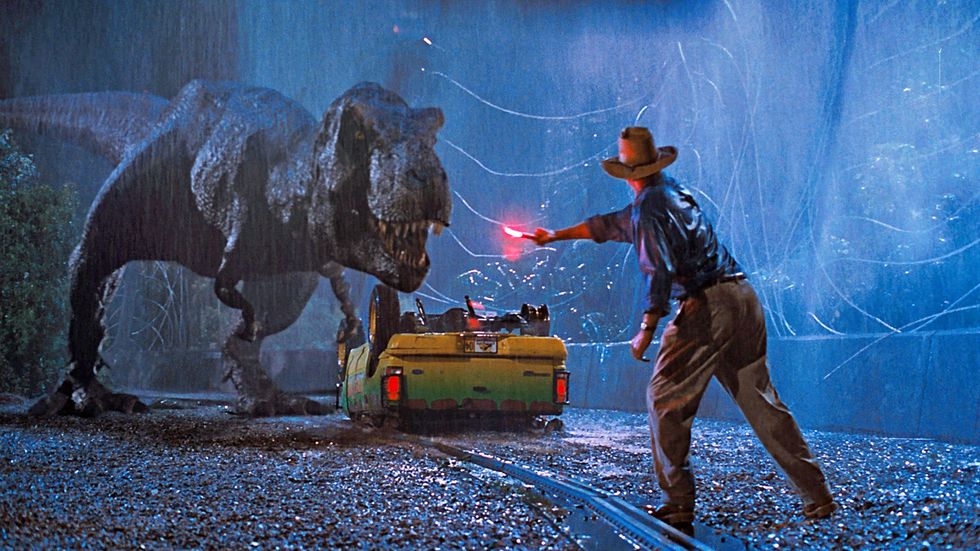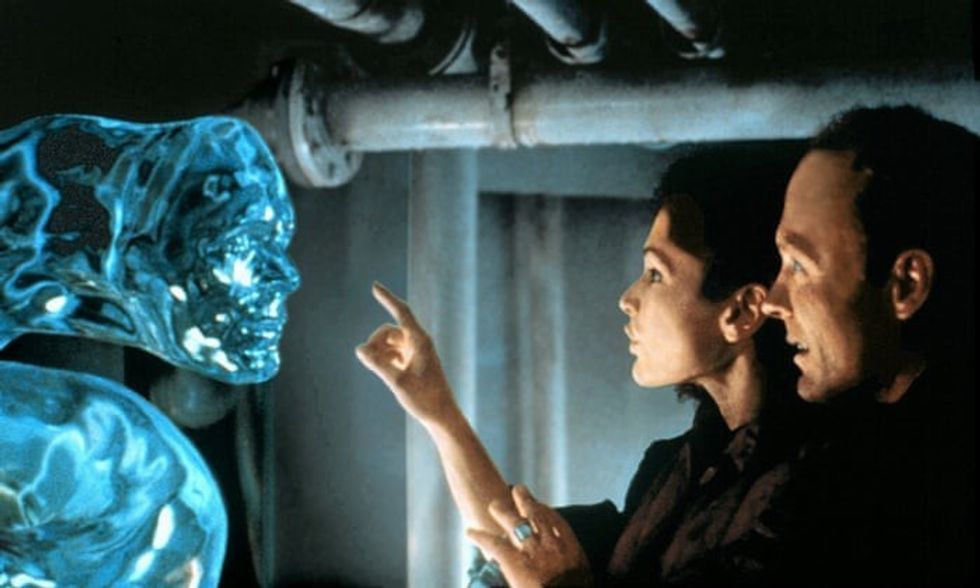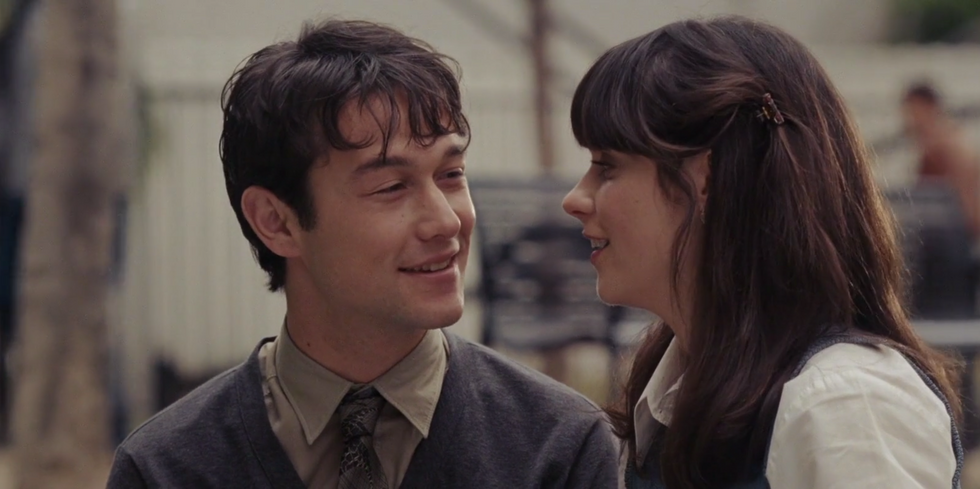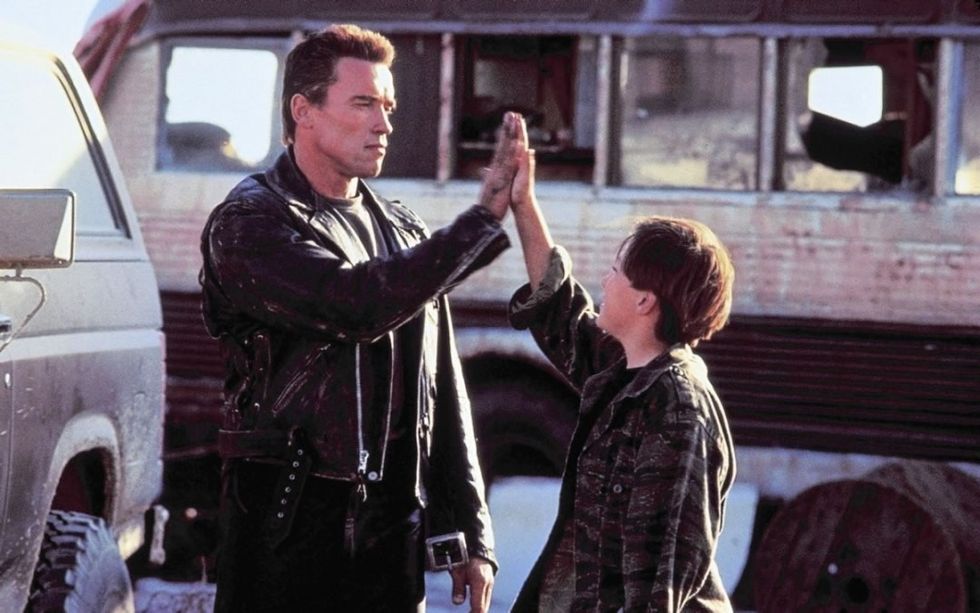I Made a Feature and I'm Showing it in Theaters, Part 2: A Step-By-Step Guide to Your Big Screen Debut
Could a DIY theatrical run be a big deal for your film? Yes—if you do it right!
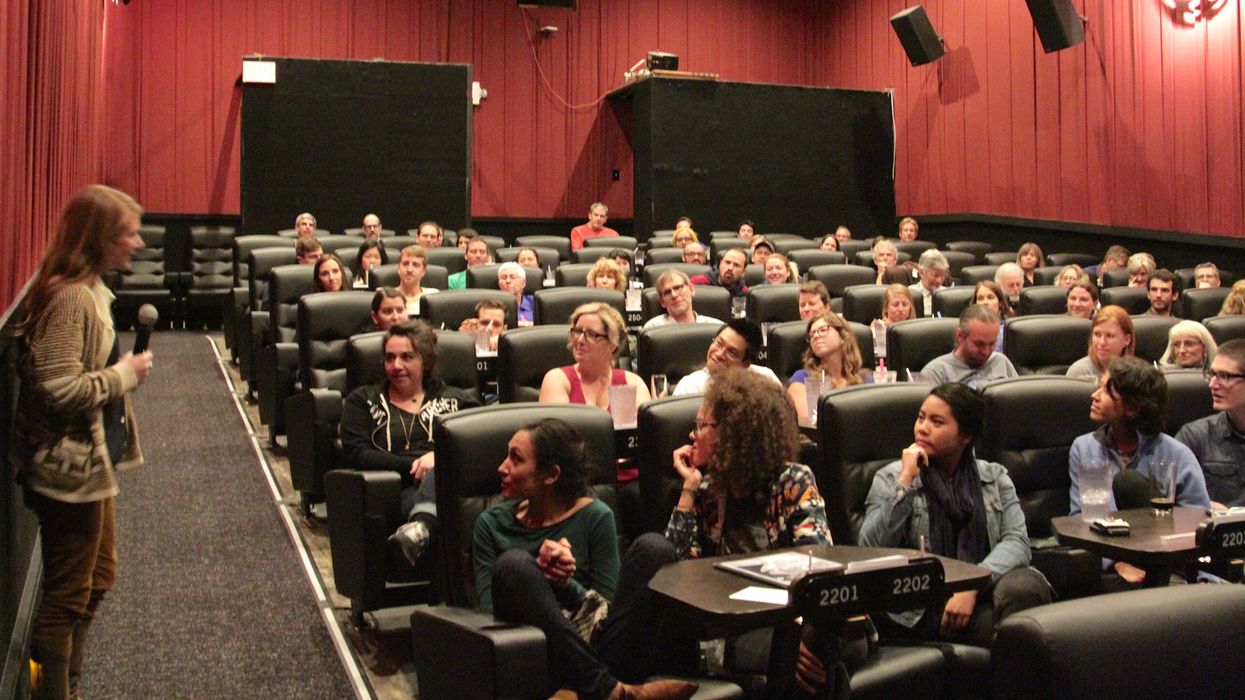
In Part 1 of this discussion (which you should read before this one), I provided the reasons a theatrical run can work for even the smallest of independent films. Now, based on my experiences with both Tugg and community screenings for Brave New Wild, I’ve written a step-by-step breakdown on how to crowdsource the big screen.
I often explain Tugg as “Kickstarter for showing in movie theaters.”
PART I: SETTING UP A TUGG SCREENING
1. Marketing: trailer and posters
I’m not a social media genius. I pretty much max out on my weekly #TBT post for Brave New Wild. I love talking and connecting to people online, but nobody becomes a filmmaker in the hopes of creating that one 140-character tweet that will go viral. However, we do become filmmakers because we want people to see our film— and preferably people to love it. Finding these people requires some marketing, particularly via social media.
Luckily, to have a successful theatrical run, you don’t need a clever marketing gimmick. All you need is a trailer! And a poster. And a good film, of course. These things, communicated over social media, are what you need for your theatrical run to be a success. I define a success in theatrical as finding your audience— that marvelous subset of the population that “gets” your film.
Maybe you have already have these materials for your festival run; maybe not. Maybe you are still working on the finishing touches, along with that ever-changing synopsis you're trying to nail. Now is the time to finish them all up once and for all!
2. Decide how your online release fits in with theatrical
Do you release online during or after your Tugg tour? This is a big question, and the answer may be different for every film. As I’ve covered on NFS previously, traditional windows are so out the window now that there are a million things you can do.
Traditional Theatrical Window
In a traditional theatrical window, you would not have your film available online while it screens in theaters. You would use a defined the theatrical window to build the buzz for later online releases. You’ll want to keep in mind that unlike a big studio picture, an independent film doesn’t always have the resources to build momentum a second time for the online release. But if you are banking on the rarity of your special features, waiting for a broadcast premiere, or need the audiences from a Tugg tour to give you good word of mouth for your online release, this could still be worth considering.
An independent film doesn’t always have the resources to build momentum a second time for the online release.
Day-and-Date Window
You release online simultaneously with your release in theaters. This is a choice common to independent filmmakers. After all, who has the budget or stamina to build momentum once for theatrical, and then again a few months later for the online release? Day-and-date can be a great way to catch more people than just the ones at your screening, with the same marketing efforts. For example, say someone hears about your screening Berkeley, CA but can’t make it. Or this person lives in Wisconsin and happened to hear about it on Facebook from a friend in Berkeley who RSVP'd to the Facebook event. If it’s available online at that moment, then that person may opt to rent or buy it. If you do take this route, keep in mind that you will be spending a lot of time on your Tugg tour.
For Brave New Wild, we took our own approach and decided to release on a handful of platforms (iTunes, Vimeo OD, VHX) shortly after our Tugg tour launched. A big part of the motivation was that I didn’t want to wait any longer (since I’d worked on this project for eight years). We did more of a soft launch, with the hope of doing a slow burn through the summer. In a few months, I can let you know if that’s worth doing; part of me wonders if launching everything on a single day might have been better.
3. Get on Tugg (or comparable site)
You can find a ton of detailed information on Tugg about this, but let me give you a quick breakdown from the filmmaker perspective: Tugg is a non-exclusive partner that you allows you to screen your film through their platform. In turn, you must own the theatrical rights to your film. When you sign up to have your film on the Tugg platform, you fill out an online form, then sign some basic paperwork (stating that you own the rights to screen the film, for example), and send them a poster, synopsis, and DCP master of your film. From there on out, Tugg keeps a copy of your DCP so they can mail it back and forth with the theaters at which you choose to screen. (Tugg handles all communication and logistics between the theaters, paid for by the Tugg cut from each screening, which I detailed in Part 1.)
4. Put in your request at least a month ahead
It will take time to get approved by Tugg, and you will want time to promote. First, look up your city and see which theaters are in the network. When you (or someone else) requests a screening, a Tugg representative looks at the requested time and date and sees if the theater

you’ve chosen can accommodate you. If the theater can do it, Tugg creates a new page for your screening. This page will let you know what the ticket threshold is, the deadline for that threshold, how much tickets are, and a button to purchase tickets. If you have an idea of your target ticket price or crowd, let your Tugg contact know from the beginning. You often don't find out those details until the screening is live (which can suck if you were hoping for a screening of 100 people and the theater you picked has seats for 400). Also, make sure to always request time before and after the screening, plus a table and mic if the theater is able (more on this below).
The deadline to meet the threshold, i.e. the minimum number of tickets sold, is usually a week before the screening; your job for the weeks leading up to that deadline is to get those tickets sold!
5. Start off slowly
Don't put in a ton of screening requests right off the bat, even though you might want to. You won’t be building confidence in yourself or the tour if you start with a handful of failed screenings, so start modestly—with one screening, preferably in a place you think will be a shoe-in. Once you have successfully met the threshold of your first screening, then get giddy. Start thinking about where else you will request to play on your tour. Each screening will help build momentum for future screenings. Slow and steady wins the race!
6. Don't make it hard on yourself
Every theater has different rates and theater seating, which translates into the price of the ticket and, in turn, the threshold. As I mentioned in Part 1, I wholeheartedly recommend booking a theater that has a lower threshold/cheaper ticket price. The threshold revenue may be less, but the work involved is also significantly less demanding. And the lower the threshold, the sooner you make your 35% profit on each ticket sold.
PART II: PROMOTE YOUR SCREENING
Now that you’ve got your strategy figured out, what next? It’s time to run your Tugg screening like a crowdfunding campaign! I often explain Tugg as “Kickstarter for showing in movie theaters.” However, in a lot of ways, it’s easier than crowdfunding because it is a local event. You’re not asking people to back a project they haven’t seen in exchange for a Facebook shoutout or digital download three years down the road. With Tugg, this is a tangible purchase— a real-life screening at a real theater. On top of that, everything you do is geographically targeted.
Here are the most basic elements that have worked for me so far.
Step 1: Find a partner for the screening
This is a very important piece of the puzzle if you are doing a screening where you do not physically live and/or to where you do not have direct access. You may actually want to find a partner before you even request the screening so you can start the process together. A partner may be interested in being the promoter themselves, or may have some dates that conflict with other events they already have going, for example. Either way, pick a partner who is connected to the people who you think would like to see your film.
For some films, it will be much more obvious where to look for partners based on subject matter. (Although you still have to win them over!) If you can’t think of anything, just get creative. Film Club? Civil War History Preservation Association? Local Mom and Pop Pizza Parlor (assuming your film has a scene that features pizza)?
Look for a partner that has an online presence.
As with crowdfunding, Tugg is an online platform, so look for a partner that has an online presence. Ideally, this partner will send out a newsletter with screening info, share the screening on social media, and be there at the screening with an info table and/or raffle prizes to boot.
Step 2: Create a Facebook event page, invite people, and post updates
As soon as your event page goes live on Tugg, create a Facebook event page through the film’s Facebook page. First, invite anyone you know who lives in the area of the screening. Use this page as a more specific area to put out updates and discussions about the screening.
Step 3: Send a newsletter
You have probably accrued a few people for your newsletter so far. (If not, your Tugg tour will definitely help with this.) Send out an announcement and a call to action to get tickets.
Step 4: Spend $10 - $40 on a geo-targeted Facebook boost
I picked that dollar figure because I’m both incredible stingy and weary of ads. But Facebook is very useful in that you can geo-target who can see your post.
So, I’ll post the trailer and write something to the effect of “Come see this film in your area on this date, more info @Facebook Event page.” Then you choose your audience as the city you are screening in, and choose an interest that aligns with your film, and boost your post so people see it. Nobody wants to be a spammer, but as far as I can tell, this is a super easy way to get your trailer and the screening directly in front of the people who would want to come but would not otherwise have heard about it.

Step 5: Reach out to the local media
Think about an angle would be of interest to a local publication, radio show, or TV station, and pitch your film that way. Any local talent? Any connection to that city? You may only be in town for a day, but it is likely to be the film’s premiere for that city, and having the filmmakers and/or cast and crew in person also makes it extra special.
Step 6: Consider an offline event
If you can find a way to have an offline event to build word of mouth for your film, it will pay off in the long run. It can also just be a way for you to bond with your partner for the screening.
For example, I made another, shorter film that is a companion to Brave New Wild (palindromically titled Wild New Brave). I have screened the short as part of existing events or in a community venue. I first showed the short film at the Stronghold Climbing Gym in Los Angeles, a unique climbing gym with an amazing built-in community located inside a brick alcove of the Brewery Arts complex. Later, when we screened Brave New Wild at Laemmle Noho 7, people who had come to the free short film screening remembered us—not to mention that the Stronghold owners, who have since become our friends, were happy to let their family of climbers know about our event.

Step 7: Hustle up some raffle prizes
If partners or companies with cool stuff in your community can donate anything, that will add value to your screening. Plus, they may also be able to tell people in their consumer base/network about your film and their items being raffled off.
Step 8: Message Tugg attendees through Tugg messaging
Tugg has a nifty feature where you can message anyone who has already bought tickets (who has opted in). Keep people updated. Sometimes, people don’t even realize that you have to meet a minimum, so a single update is often enough to get them involved in inviting their friends. They got tickets, so they obviously want the screening to happen!
Step 9: Repeat steps 2, 3, and 4 until you meet the threshold
Just stay calm. Keep in mind the Tugg statistic that 91% of their screenings that sell over 30 tickets meet the threshold. Nice!
Haven’t got to your threshold yet? Need more momentum? Here’s a few more ideas.
Step 10: Email people you know, asking them to invite a few more people that they know
You know, classic chain letter stuff here. Obviously use your best judgment, but I never feel weird about shooting an email to someone I like who I know has a ton of friends in a certain area. Honestly, I don’t mind getting those kinds of emails, either.
Step 11: Give away free tickets to local partners in exchange for some press or social media
Everyone likes a good barter! Plus, you can see if a local business will buy a few tickets for their members.
What if your screening fails? Don’t sweat it. Learn from what went wrong, try something different, and apply it to the next screening and the next partner in the next city.
PART III. MAKE EACH SCREENING A SUCCESS

Step 1: Enlist a friend to help collect tickets
A few hours before the Tugg screening starts, you will get an email with all the attendees. Print this and bring it with you. Sometimes theaters will handle ticket collection, but often not. If not, your kind friend can just check people off as they arrive with a handy dandy clipboard (and a table the theater provides). We started bringing a roll of red raffle tickets with us, which doubled as raffle tickets and movie tickets in the event the theater didn’t have any tickets printed for us.
Keep in mind that if your friend is going to watch the film, plan to take over ticket collection a few minutes before the movie starts. People will often arrive late.
Step 2: Print your movie poster
And put it on an easel you also brought. If you traveled to your screening on say, Megabus, and had no room for either, a quick Kinko's printout and some tape from the theater can always work if you don’t mind losing a few points for presentation.
If you can get your film on the marquee, great. (A phone call to the theater may be needed to facilitate this photo-opp novelty!) But if you are taking tickets, you’ll still want some kind of poster.

Step 3: Enlist a friend or partner to be the moderator
They have two jobs. Firstly, they'll give a brief introduction before the film (the basic gist is “Hi, welcome to the film! We have a Q&A and raffle after the screening, so stick around.”) Then, importantly, after the movie ends and the lights come up, this person starts off the Q&A.
The Q&A part of the screening is the most unique, challenging, and rewarding part of having a theatrical event to begin with. And it’s not just because I like to hear myself talk! The coolest thing about seeing an independent film is that you have a chance to hear and talk with the people that made the film.
What if you aren’t a public speaker? Well, this is not your average public speaking engagement; you’ll be good at this. How many hours did you think about and work on this film? Odds are, you spent a lot more than 60-100 minutes (the length of the movie) thinking about every carefully crafted minute. So you actually have a lot to say that could never be addressed or explicitly revealed in the film. All you have to do to prepare is think about all the cool stuff you thought about when making the film, and if you’re lucky, this is what people will ask you about.

Step 4: Bring DVDs to sell
Don’t forget to tell people that you have them for sale. And don't feel like a schmuck! It's a good deal: no shipping, people know if they liked it, and some cast/crew can sign it. You can actually make some much-needed cash.
We usually include a few DVDs in the raffle, which is a great way to bring it up without feeling like you’re peddling your goods. “Didn’t get a DVD in the raffle? We’ve got a few we can sell, and we can sign it, too!”
You will probably want to designate someone to have these DVDs on hand. Your producer? Your friend who collected tickets? I don’t have a credit card swiper, so we just sold DVDs for cash. If somebody really wants one and doesn’t have any cash, you can try the honor system—give them a DVD and ask them to pay online at home. People are pretty good for it!
Part IV: KEEP YOUR AUDIENCE
Here’s your chance to thank everyone and engage them!
Step 1: Use Tugg to send an email to all the attendees
Keep in mind, you are allowed to include these emails into your regular film newsletter. But before you do, you might want to shoot them a note through Tugg that will be just for them. What can you include?
- Ask for a review
- Give a coupon code for your DVDs or downloads
- Share a link to Facebook photos
- Ask them to tell their friends about the next screening
Step 2: Build attendees into your newsletter
Keep them engaged! They’ve seen your movie, and if they stay subscribed to your newsletter and follow or like you on Facebook, they liked it! As people in this business often say, an email address is as good as gold.
Step 3: Recruit your network to promote further
Get them to request more screenings, or even organize one themselves.
If you’re still on the fence about having a theatrical run at all, peruse Part 1 of this topic, where I give my best suggestions as to why it and how it can benefit your film.
If you’ve got any real-world experiences screening theatrically, please share what worked for you in the comments.
Check out Oakley Anderson-Moore's reasons why you should choose a Tugg tour (i.e. Part 1 of this article).







